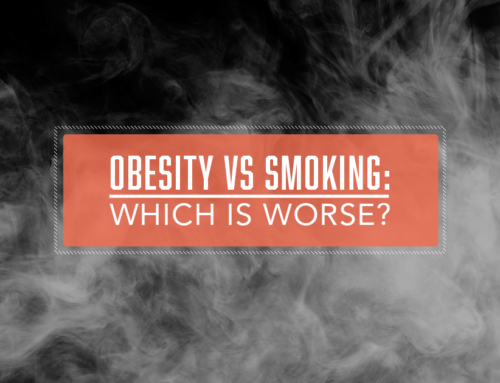Though researchers are disappointed in the long-term results of LAP-BAND, it remains a noninvasive solution to losing excess weight and reducing or even resolving serious comorbidities such as Type 2 Diabetes, hypertension and sleep apnea. Belgian researchers following 82 patients who had the LAP-BAND procedure in 1994-1997 recently reported their findings in the Archives of Surgery.
The study is the longest known tracking study for the popular weight loss procedure, which consists of an inflatable silicone ring placed on the upper part of the stomach to restrict consumption and induce a feeling of fullness. As patients lose weight, the band is reinflated (filled) with water through a subcutaneous injection port placed below the navel; most patients require 3-4 fills the first year after placement. The band restricts how much a person can eat and makes one feel full more quickly.
What the study found 15 years post banding….
– Patients lost on average 43 percent of excess weight
– The bands eroded in almost one third patients
– About half the patients had their bands removed
– Sixty percent of the patients underwent revision (additional) surgery
The researchers expressed disappointment in these findings as worse than expected, concluding that adjustable gastric banding appears to result in "relatively poor long-term outcomes," according to study author Dr. Jacques Himpens (European School of Laparoscopic Surgery and St. Pierre University Hospital in Brussels).
Does this mean the adjustable gastric band, popularly referred to as LAP-BAND, which is United States healthcare company Allergan's branded system, is not a good option for losing weight?
Not at all. What it does mean is what responsible gastroenterologist surgeons have been saying all along: LAP-BAND – or any weight loss surgery for that matter – is not a cure for obesity. It is a tool that aids in short term weight loss, which gives the patient a chance to establish healthier eating and exercise habits for effective lifetime weight management.
Laparoscopic adjustable gastric banding was greeted with enthusiasm not because it was expected to be more effective than the prevailing gold standard of weigh loss surgery – the RNY Gastric Bypass – but because it is far less invasive, involving no stomach resection, with far lower risk of acute complication.
The RNY Gatric Bypass (what the NIH and the Annals of Surgery call the 'gold standard' of obesity surgery) involves the surgical removal of about 80% of the stomach. The procedure results in the greatest and longest term excess weight loss (~70%), but due to malabsorption of nutrients caused by the intestinal rerouting must face the prospect of a lifetime of dietary supplements to avoid anemia, bone and hair loss. It also carries with it a risk of gastric leaking, a rare but usually fatal complication.
The Vertical Sleeve Gastrectomy (VSG) also involves surgical removal of the stomach and results in the loss of about 50-60 percent of excess weight; there is no impact on nutrient absorption., but patients face the same risk of gastric leaking.
LAP-BAND, by contrast, is an ambulatory procedure (vs. the 5+ day hospital stay of RNY and VSG). It's lower risk of acute complication and 24-hour hospital stay were strong drivers of its early popularity, so much so that tens of thousands of United States patients traveled in the late 1990's to Mexico (where Allergan certified selected Mexican gastroenterologist surgeons at leading hospitals) on LAP-BAND placement prior to receiving FDA approval in 2001.
I shared the study results with LA resident Laureli Srery who had LAP-BAND surgery a year ago, asking if she'd understood the limitations of the procedure before having it, and if not, would she still have moved forward had she known?
"Absolutely it's been the best thing I've ever done for myself," was her answer. "I've lost 80 lbs, and that kind of weight loss in a year's time would not have been possible – for me – without surgical intervention." When asked about the possibility of erosion she was dismissive. "I knew it was a risk but then again, one way or another I always knew that the band would be coming out some day, right? "
If and when Laureli reaches that point without wanting a revision surgery, there are now nonsurgical alternatives: studies on an endoscopic incision in the gastric wall followed by oral removal of the band are receiving strong support from obesity surgeons.
The FDA apparently agrees with Ms. Srery, recently announcing that it is lower Body Mass Index(BMI) restrictions for the procedure; historically patients had to have a BMI of 40 (defined by the NIH as superobese, or morbidly obese) to get banded, but the new guidelines enable people who are just barely obese – i.e. a BMI of 30 – to have the procedure, a move that more than doubles the ~18 million people eligible for the procedure.
Applying these guidelines to a real world example: the BMI requirement of 40 means person who is five-foot-six would have to reach a weight of 216lbs to qualify for LAP-BAND; a 30 BMI requirement means that same person qualifies for the procedure at 186 lbs.
Those with a BMI of 30 must have what is known as comorbid health problems, e.g. hypertension, sleep apnea, or Type 2 diabetes. People merely overweight without these indicators will not be approved for the procedure which, despite its noninvasive ambulatory nature, is major surgery that carries with it the same risks of any other surgical procedure.
The Belgian researchers concluded that adjustable gastric banding results are worse than anticipated, and advising patients who are considering the procedure not to harbor overly optimistic expectations, which, to be fair, Allergan has been careful not to promote: in the study it submitted to the FDA to lower BMI restrictions, patients lost an average of 18 percent of their excess weight after one year.
While these results may be disappointing to researchers, most patients seeking obesity surgery receive a number of benefits beyond weight loss; many health complications of obesity, such as sleep apnea and Type 2 Diabetes, are significantly improved or even resolved with weight loss surgery.
Considering the risks that these illnesses pose to the US population – for example diabetes affects 25.8 million people and is the leading cause of kidney failure, nontraumatic foot and leg amputations, new cases of adult blindness as well as a major cause of heart disease and stroke and is listed by the CDC as the seventh leading cause of death in the US – it is clear that we need all the non-invasive help we can get reducing our collective waistlines. Our future depends on it, and LAP BAND is, for now, a solution that offers patients the potential to safely lose excess weight with less risk of early or acute complication than the current gold standard weight loss surgery procedure.






